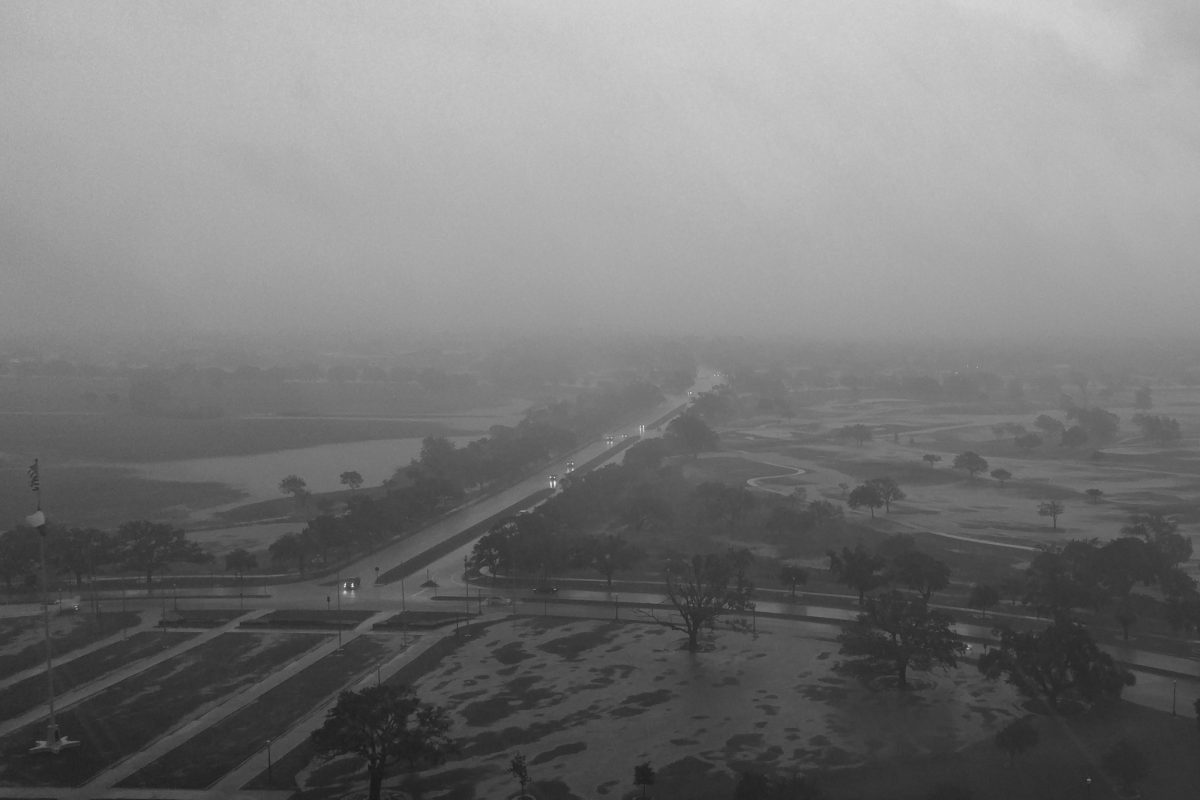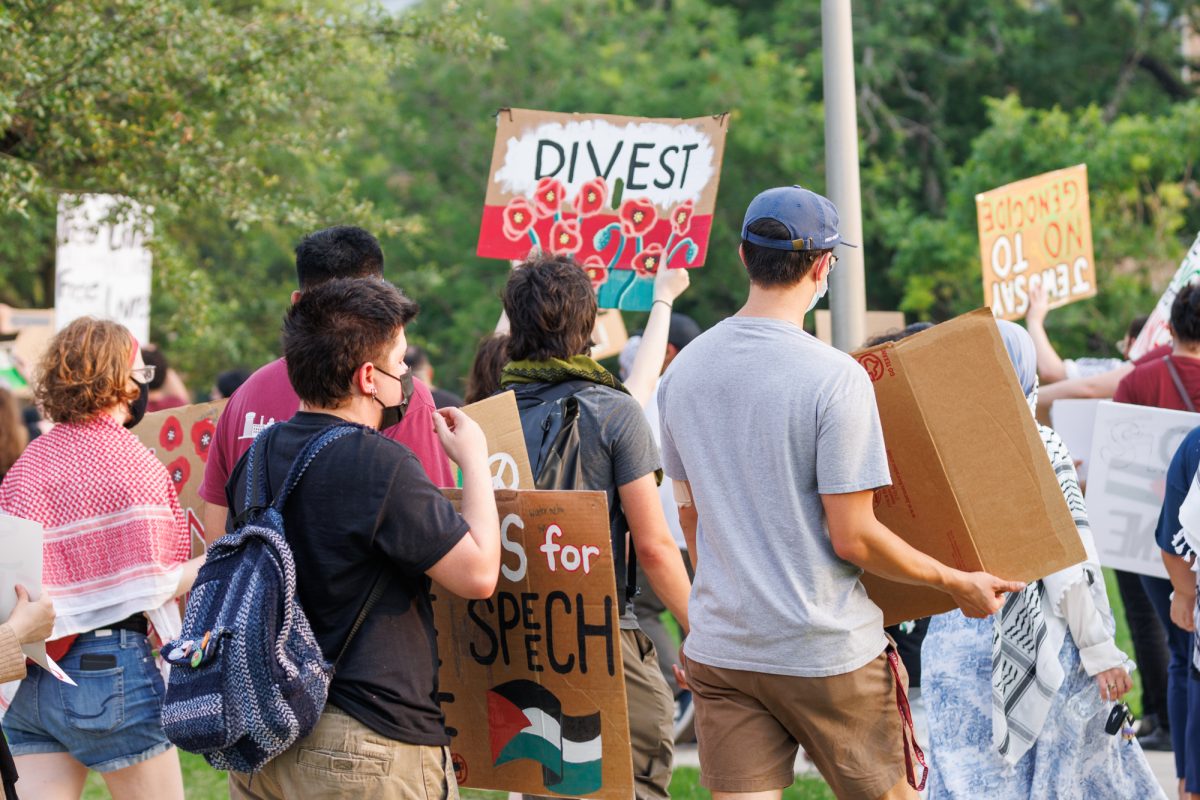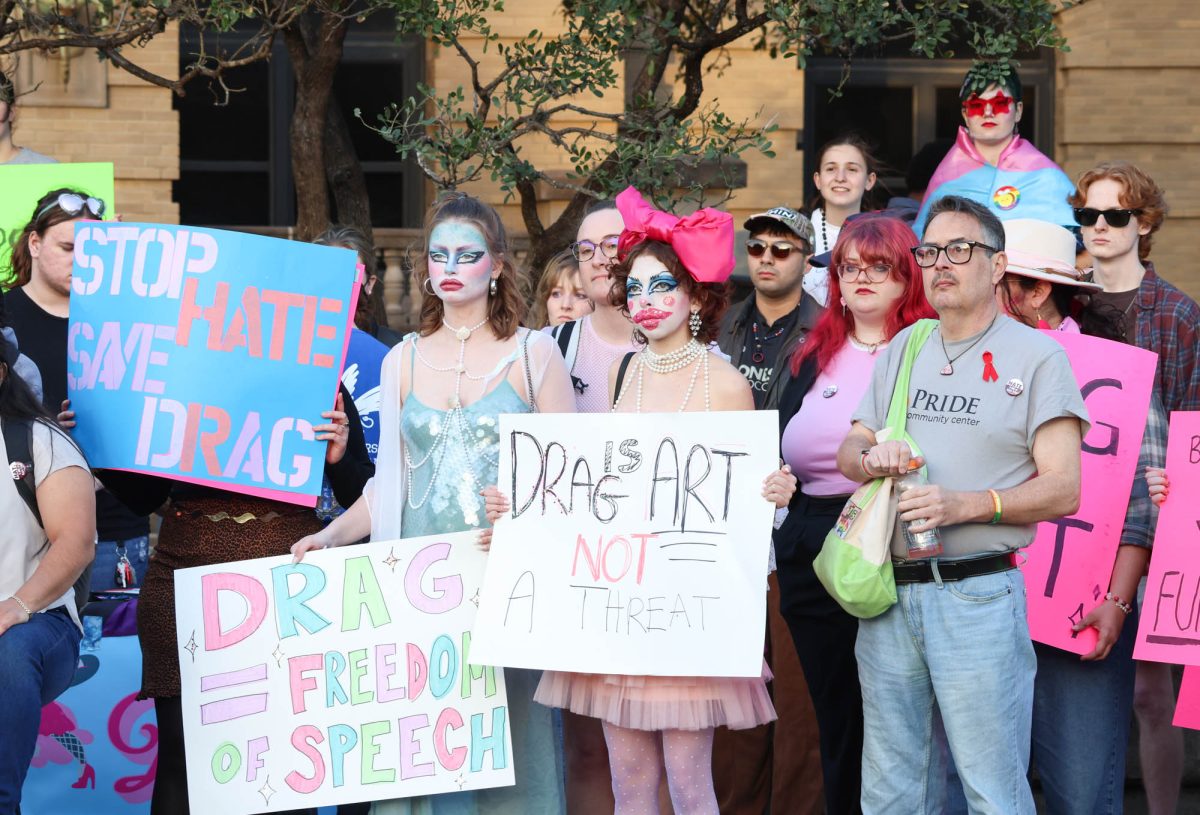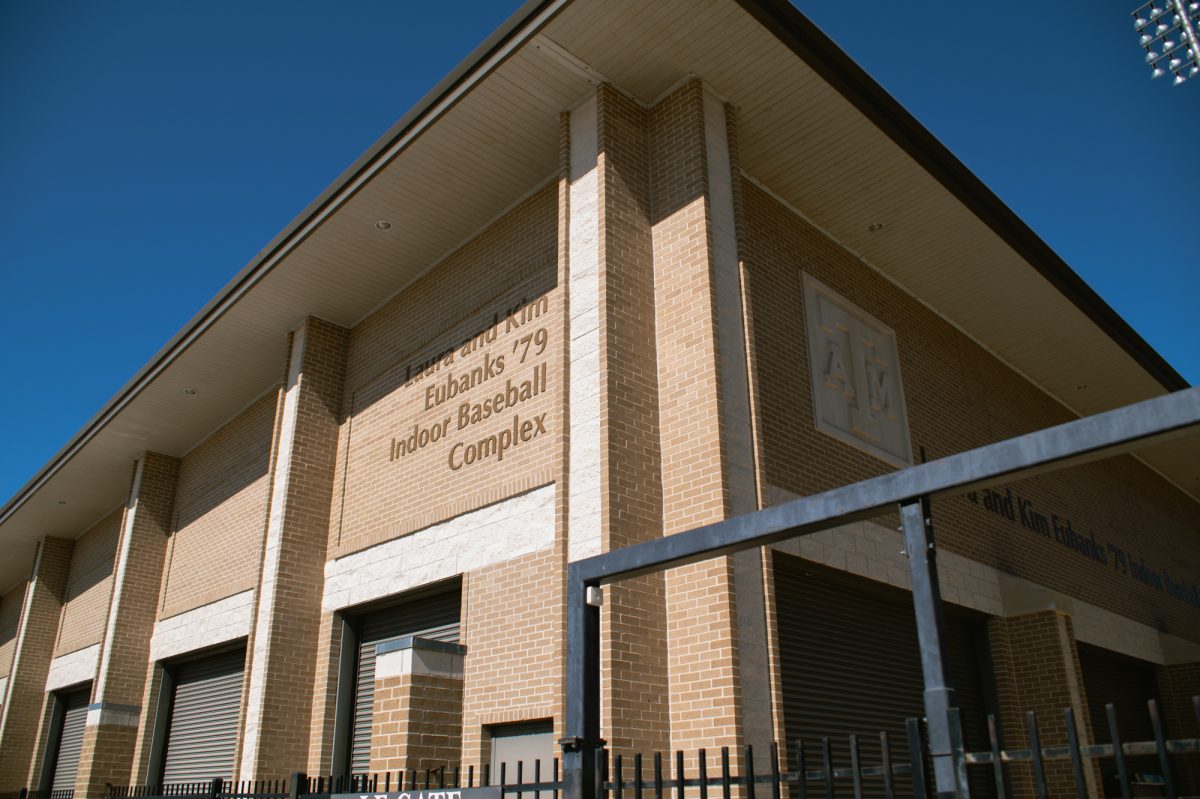Drivers may have noticed the lack of trees along University Drive, as the city of College Station removed them on Sept. 6. Zero plants in a long stretch of concrete could have a negative impact on College Station’s weather, according to Texas A&M professor John Nielsen-Gammon, Texas state climatologist and director of the Southern Regional Climate Center. It’s not just the trees — their removal is one of several climate-related events Nielsen-Gammon feels could impact A&M.
“Replacing vegetation with impervious surfaces reduces the amount of evaporation that takes place and increases the amount of runoff,” Nielson-Gammon said. “So you can have a greater flood risk … it can lead to higher temperatures during the day and night.”
Texas experienced record-breaking heat over the summer, with heat indexes in the triple digits stretching for days in cities such as Corpus Christi, San Antonio and Amarillo. College Station reached an average high of 95 degrees in August. Nielsen-Gammon said extreme heat events like this could become more common as global warming continues. The high and low averages are lower than 2023 after El Nino, a weather phenomenon causing warmer temperatures worldwide, ended earlier this year.
“Climate change is mostly a large-scale phenomenon,” Nielsen-Gammon said. “Houston’s had [Hurricanes] Harvey, Beryl … they bring all sorts of extreme weather with them. Strong winds, heavy rains, storm surge — and each one is affected by climate change.”
While heat waves may be increasing in number, other forms of extreme weather, like hurricanes, may be becoming less common, Nielsen-Gammon said. But while they become rarer, the ones that do form might be stronger and more dangerous.
“We don’t get wind damage as frequently, but when you do, it’s worse,” Nielsen-Gammon said. “Same thing with storm surge.”
Extreme weather may not be the only ecological event affected by climate change. In a scientific paper published in September, researchers from Ohio State University discovered over 1,700 new viral particles, the most ever found in a glacier to date.
Like the Ohio State researchers, A&M professor Benjamin Neuman, Ph.D., runs a lab searching for new viruses and fossil samples with evidence of viral activity.
“Everything is a little bit sick all the time,” Neuman said. “It turns out that’s a wonderful way of finding all the extra viruses that we didn’t know were there but were actually in apparently-healthy organisms.”
Viral particles from melting glaciers are being exposed to increasingly intense weather patterns, as global warming creates more opportunities for violent storms. Though they may not pose a threat to humans, these viral particles could signal an increase in viral mutations that align with global warming.
“There’s people that crack open really old salt crystals, half a billion years old … and sometimes there’s bacteria in those pockets,” Neuman said. “And they’ve sequenced those bacteria, and they turn out to be fairly similar to things you find around. But, of course, we’ve been mining salt and spreading it on the roads, so it may be something that we’ve introduced ourselves.”
The Ohio State paper discussed the similarity of discovered viruses that thrived during hot periods to modern viruses and the diversity of microorganisms that arose during those times.
“Nothing’s ever really new,” Neuman said. “It’s only new to us because we haven’t looked at it before.”
In Neuman’s lab, previously unknown viruses show predictable patterns of mutations that can be tracked based on the number of small changes. The slowly-changing climate can also be monitored and will require different emergency responses as extreme weather changes occur.
“As a general rule, the changes are incremental,” Nielsen-Gammon said. “You don’t have to scrap what’s being done — you just may have to increase the efforts in some areas, and on the other hand, shift some resources around to threats that are emerging more rapidly than others.”
Climate change has faced challenges over the years, including the denial of its scientific validity, public ambivalence and a lack of policy changes. Nielsen-Gammon said he has seen the changes in attitude towards this issue for over two decades.
“When I became the state climatologist in 2000, climate change wasn’t really a thing,” Nielsen-Gammon said. “It was something that potentially was happening and something that was potentially significant. Since then, it’s become clear that it is happening, and in many ways, it is significant. That changes how we look at everything that involves the outdoor environment.”
Similarly, Neuman’s research depends on the preservation of delicate fossils — work that is becoming increasingly precarious as the conditions required to maintain fossils are deteriorating along with the climate. Climate change, Neuman said, is just one of the many pressures placed on scientists in the modern era.
“It affects everything all the time,” Neuman said. “How do you separate out the impact of that from the impact of culture, the impact of industry? They’re all these things, and they’re all moving — and it’s really hard to compartmentalize. And I don’t know that we can do much about any of them.”
















